Salinity Management Guide
Problems involving trees, shrubs, and ground covers
Plant damage resulting from water stress
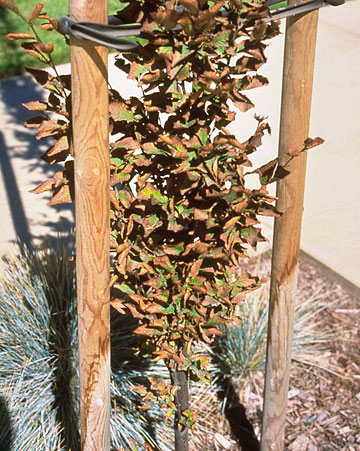
Photo courtesy of Perry. |
Symptoms: Reddish brown necrosis starting on leaf margin and extending to whole leaf in this new planting. Diagnosis: Acute water stress. Solutions: Irrigate adequately after planting, thus avoiding any water stress until roots are established. |
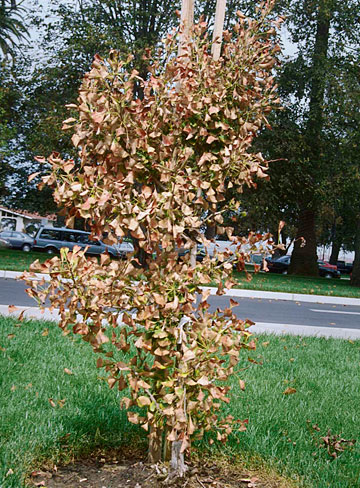
Photo courtesy of Hortscience, Inc. |
Symptoms: Newly planted ginkgo tree died a few days after planting. Diagnosis: Death resulted from lack of water. Solutions: Transplanted trees should be closely watched for water stress. Replant with another ginkgo tree. |
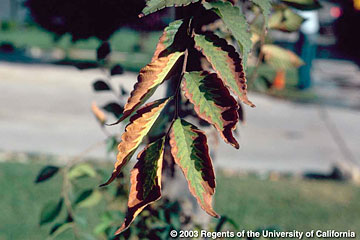
Photo courtesy of Perry. |
Symptoms: Burned leaf margins on growing tips of Zelkova serrata. Diagnosis: The damage noted results from water stress. Solutions: Deep watering is recommended. Large trees require deep watering whenever the root zone is depleted of soil moisture. |
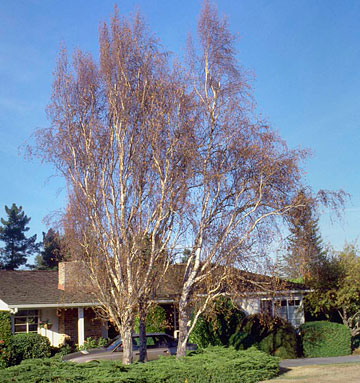
Photo courtesy of Larry Costello. |
Symptoms: Foliage throughout this European white birch shows signs of injury and is dying back. Diagnosis: This tree suffers from severe water stress, probably because irrigation was discontinued for an extended period. The dry conditions of the lawn supports this conclusion. The adjacent junipers do not show symptoms of water deficit; this is not surprising as those plants are very drought-tolerant. Solutions: Water the trees heavily (i.e., deeply) once and then resume appropriate irrigation. If trees do not recover, plant new trees of a species that requires less water, such as pine or acacia. |
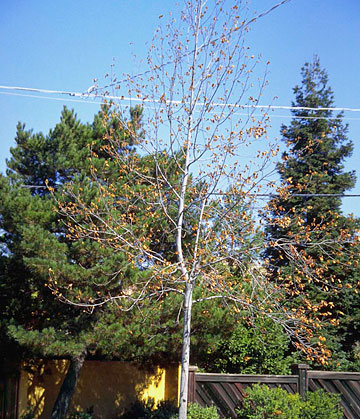
Photo courtesy of Larry Costello. |
Symptoms: Browning and defoliation of tulip tree. Diagnosis: The manzanita ground cover and the tulip tree are in the same irrigation zone. These two plants have differing water requirements. (The tulip tree requires a fair amount of water, whereas the manzanita thrives on very little.) Solutions: Increase the duration of irrigation, to avoid water-deficit damages to the tree. If that fails, plant a new tree that requires less water, such as pine or olive. Species with differing water requirements should not be planted in the same irrigation zone. |
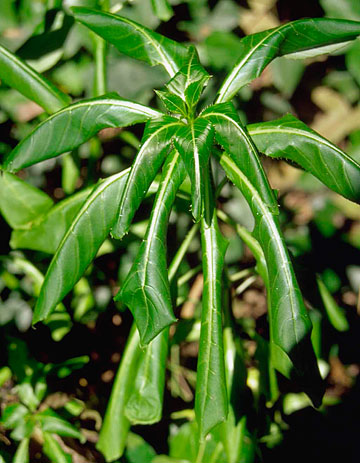
Photo courtesy of Larry Costello. |
Symptoms: Rhododendron plant wilting on a warm summer day. Diagnosis: Although there was adequate soil moisture, this plant is wilting. This is known as incipient wilting. Solutions: Provide shading by planting of trees nearby or plant rhododendron in shadier spot. |
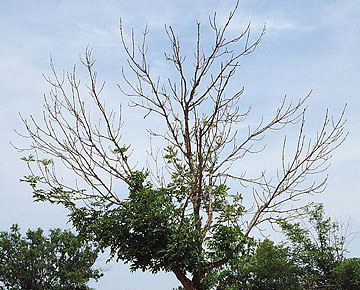
Photo courtesy of Clark. |
Symptoms: Ash tree becoming defoliated (losing leaves) and dying back. Diagnosis: The tree is stressed by chronic water deficit. Solutions: Adjust irrigation by increasing duration or flow rate. |
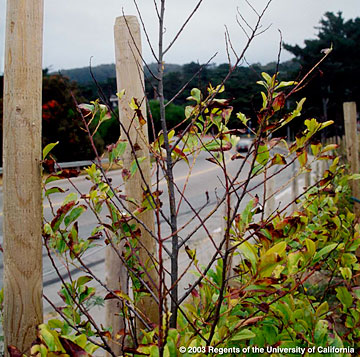
Photo courtesy of Larry Costello. |
Symptoms: Branches of this shrub are losing branches and dying back. Diagnosis: Shrub grown on road side suffers from severe water deficit. Solutions: Irrigate the shrub or replace it with one that's more drought-tolerant, such as manzanita or juniper. |
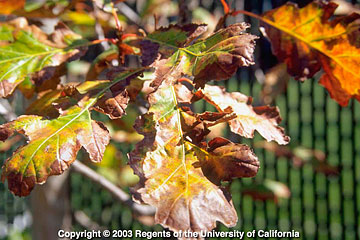
Photo courtesy of Larry Costello. |
Symptoms: Leaves of deciduous oak are discolored and tattered. Diagnosis: This oak is suffering from water deficit. Wind "burn" may be a factor, too. Solutions: Irrigate tree adequately. |
| « Previous page | Next page » |